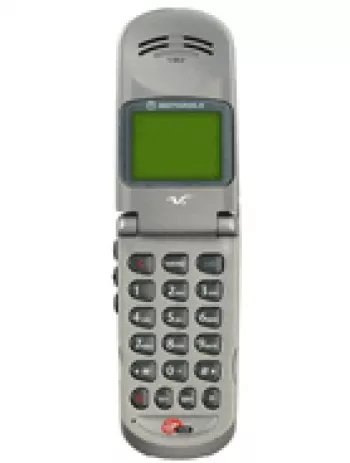
Overview of Motorola MPx220
The Motorola MPx220 is a historical piece in the evolution of smartphones, initially announced in the first quarter of 2004. Although the device has since been discontinued, it remains a significant milestone due to its features and the technological advancement it represented at the time. Offering a compact, clamshell design, it catered to tech enthusiasts looking for an innovative mobile experience with Microsoft Smartphone 2003. Below is a detailed exploration of its specifications and distinctive features that made it stand out in its era.
Design and Build
The Motorola MPx220 sports a stylish clamshell design, measuring 100 x 48 x 24.3 mm and weighing just 110 grams, which made it portable and easy to handle. Its size of 99 cc made it a pocket-friendly gadget, a desirable feature for mobile users of that time. The exterior housed a sleek silver finish that complemented its sophisticated appearance, appealing to both business professionals and general users alike. Despite its compact size, it was robust, providing durability that users appreciated.
Display
The device features a 2.0-inch TFT screen with a resolution of 176 x 220 pixels. Supporting 65k colors, the display offered clarity and brightness sufficient for its time. The ~141 ppi pixel density ensured decent clarity for viewing images, reading messages, or browsing web content. Although the screen-to-body ratio was approximately 26.2%, the compact screen was well-suited for its intended functionality and audience.
Camera Capabilities
The Motorola MPx220 was equipped with a single 1.3 MP camera, which included an LED flash, a rare feature for mobile phones at the time. This addition allowed users to take photos in low-light conditions, expanding the usability of the camera. It also supported video capabilities, providing a versatile multimedia experience for users who wished to capture moments on the go.
Performance and Platform
Powered by a TI OMAP 1611 chipset with a 204 MHz ARM926EJ-S processor, the MPx220 offered reliable performance for the day-to-day tasks required by its users. It ran on Microsoft Smartphone 2003, a platform that integrated smoothly with Microsoft software, allowing users to sync emails, manage contacts, and organize calendars efficiently. This operating system supported basic applications and provided a simple, user-friendly interface.
Memory and Storage
The phone came with 64MB of internal storage, which could be expanded using a miniSD card up to 512MB. This was a significant feature at the time, as it provided users with the flexibility to store more data, including multimedia files and essential documents, without worrying about running out of space.
Network and Connectivity
Supporting GSM technology, the MPx220 operated on 2G bands (GSM 850/900/1800/1900), providing global connectivity for voice calls and messaging. It offered GPRS Class 8 for internet connectivity, allowing users to access the web albeit at slower speeds compared to modern standards. The phone lacked EDGE technology but compensated with Bluetooth 1.1 for wireless transfer, and an infrared port for data exchange, positioning it as a versatile communication device for its time. The USB connectivity was proprietary, which was common in that era.
Audio and Sound
The Motorola MPx220 featured a built-in loudspeaker and supported a range of alert types, including vibration, downloadable polyphonic, MP3 ringtones, and a composer feature that allowed users to create their own tones. However, it did not include a 3.5mm headphone jack, requiring users to rely on alternatives for private listening experiences.
Battery Life
The phone was powered by a removable Li-Ion 1000 mAh battery, which provided substantial usage time given its features. The stand-by time ranged between 140 to 260 hours, and it offered talk time between 5 to 7 hours, ensuring users were adequately covered for a day's worth of regular use. This battery lifespan was quite competitive, providing genuine convenience in an era where battery technology was still evolving.
Miscellaneous Features
Other notable features included a WAP 2.0/xHTML, HTML (PocketIE) browser that supported basic internet browsing, albeit limited by the available network speeds. The absence of sensor technology was not unusual for phones from this generation. Its color availability was limited to a classic silver, appealing to those preferring a minimalistic appearance.
Conclusion
The Motorola MPx220 stands as a testament to the technological progress of its time. Although it has been discontinued, the device's combination of efficient design, reliable performance, and an early smartphone operating system showcases its contribution to the evolutionary path of mobile devices. While the features may seem modest by today's standards, the MPx220 was innovative and served its user base effectively, laying the groundwork for the modern smartphones we rely on today.
Key Features of Motorola MPx220
- Quad-band GSM support (850/900/1800/1900 MHz)
- Compact design with dimensions of 100 x 48 x 24.3 mm
- Lightweight at 110 grams
- TFT display with 65k colors, 2.0 inches in size
- Powered by Microsoft Smartphone 2003 OS
- 204 MHz ARM926EJ-S processor
- Expandable memory via miniSD card slot (up to 512 MB)
- 1.3 MP main camera with LED flash and video capability
- Bluetooth 1.1 for wireless connectivity
- Infrared port available
- Removable Li-Ion 1000 mAh battery with up to 7 hours talk time
Disadvantages of Motorola MPx220
- Lacks EDGE technology for faster internet connectivity.
- Discontinued and obsolete, limiting support and repairs.
- Small screen size of 2.0 inches with low resolution.
- Limited internal storage of 64MB and supports miniSD card up to only 512MB.
- Camera lacks advanced features and is only 1.3 MP.
- No front camera for selfies or video calls.
- No 3.5mm headphone jack, limiting audio accessory compatibility.
- No WLAN (Wi-Fi) capability for wireless internet access.
- No GPS for navigation or location services.
- No FM radio feature.
- Bluetooth version 1.1, which is outdated and slower.
- Uses a proprietary USB port instead of a standard type, complicating connectivity and charging.
- Short standby time and talk time due to a 1000 mAh battery.


















View Also
More Phones
All Rights Reserved +14266 Phones © Mobilawy 2025

























